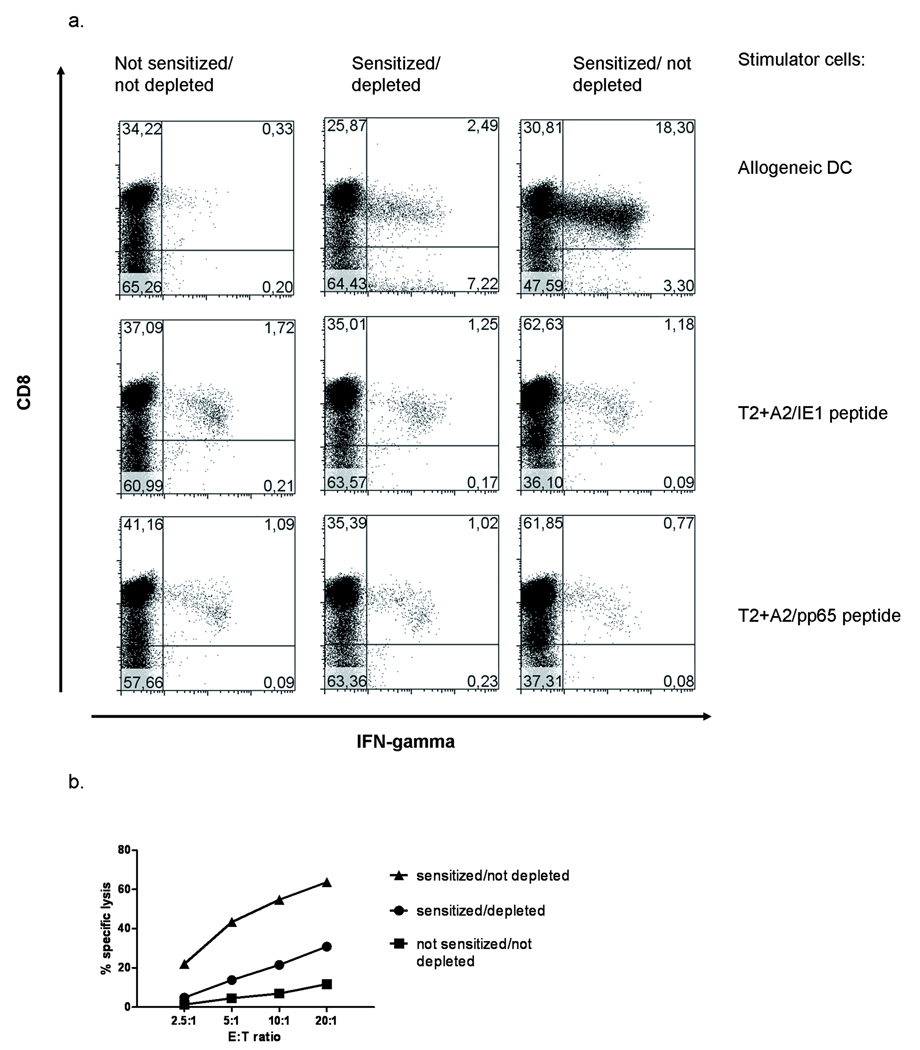Figure 3.
Depletion of CD137+ T-cells results in decreased alloreactivity and maintaine d T-cell memory. PBMC were stimulated (sensitized) with mature allogeneic dendritic cells on day 0. To ensure survival of the T-cells in the unstimulated control, cells were kept in culture with IL2, 50IU/ml throughout the whole culture period. For stimulated cultures, cytokines were added only after depletion on day 2. To ensure best depletion results, CD137+ T-cells were depleted twice, first at the peak of CD137-expression after 24h and then after 48h to remove T-cells that were activated at a later time point by the remaining dendritic cells. Removal was performed using anti-CD137-APC and binding to anti-APC-beads (Pharmingen/Miltenyi). A control group (sensitized/not depleted) was stained with CD137-PE followed by the same depletion procedure using anti-APC-beads and LD-columns. All groups were then resuspended in fresh medium containing IL2, IL7 and IL15. a. On day 8 of culture, the cells were restimulated with mature, allogeneic DC from the original donor, and intracellular IFNγ production was assessed after 6h of incubation. Responses to the HLA-A0201 restricted CMV-derived peptides IE1(316–324) and pp65(495–504) were assessed using peptide pulsed T2-cells.
b. The same groups as in a were assessed for their lytic capacity by incubation for 4h with of 1×104 51Chromium-labelled allogeneic, mature dendritic cells as targets. The assay was performed in triplicate. SEM of any the data points was in the range of 0.17–2.98). Statistical analysis using one-way ANOVA analysis showed a stastically significant difference between all groups (p=0.0005).

